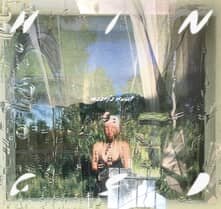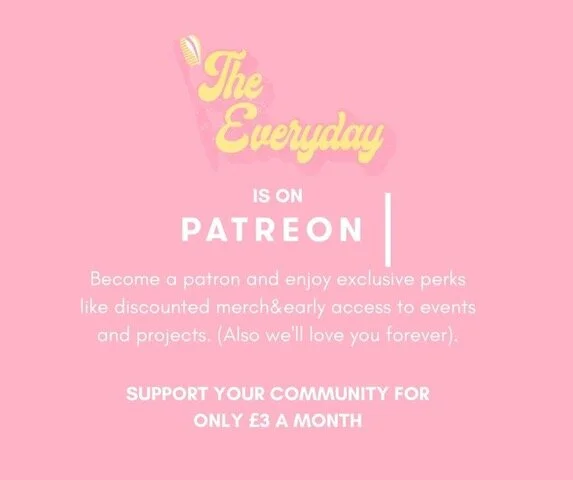Talking to: Maarja Nuut
©Taavi Arus
Estonia-born and classically-trained musician Maarja Nuut is not afraid to delve into a number of disparate genres when making music, including Hindustani classical music while studying in New Delhi, Estonian archive sounds and most recently, the outer limits of looping and electronic sounds. Her solo work has garnered attention from 6 Music’s Mary Anne Hobbs, The Guardian and The Quietus, amongst others.
Fuelled by her instincts and curiosity, such exploration comes from an inner need and a desire to probe each world’s musical language, techniques, and expressional qualities – elements she swirls into her own, mesmerising art. Alongside receiving numerous awards for her music and ethnomusicological work, Nuut has toured the world several times over as a solo performer and is known for her compelling, often hypnotic live performances.
We caught up with Nuut at the end of a long, hot Estonian heatwave at her late Grandmother’s country house, where she worked on her album ‘Hinged’, which came out on August 20th.
Tell us a bit more about yourself and where you are / what you are doing at the moment.
It’s very late night here, I’m in my country house, all the doors are open as it’s warm outside, probably the last real warm summer night to end a two-month heat wave. Crickets are singing as if it was late August and our wild barn cat Vanja has just caught a water rat and is eating it. We’ve got a few acres of young forest to tame and grow, a pond that’s a popular drinking spot among the locals such as bears, moose, deer and such. Vegetable beds with lots of hipster and ordinary potato-carrot stuff growing. Three cats and old farm buildings that require heavy plastering.
So that sort of thing… and at the same time I’m trying to figure out how to build up a new live show around my album ‘Hinged’. A lot of the material on it is produced in a way that it’s impossible to just play it. There are many spontaneous improvisations recorded and then heavily manipulated, or things being totally chopped up and then reassembled in a weird way. So it feels a bit like recreating the whole album… and even the way I perform. Also, last time I was on stage was Autumn 2020 so I’m having quite intensive days filled with excitement and mixed feelings.
Tell us about the music scene in Estonia, and what you love about your home.
The music scene here is relatively small as we’re a relatively small country (1,3 million citizens), but it’s lively and covering a whole spectrum of genres, I’d say. Most of us know each other - that can be wonderful.. it’s so easy to reach out to whoever but then again, it can also sometimes feel a little clogged or constrained, something to associate with living in a small place or community.
On the other hand if you live a real village life here, it offers plenty of privacy (dispersed settlements is a thing here) and an inspiring environment. I’ve always been a little bit of a loner.. or more precisely, I don’t associate myself with only a certain part of the music scene or social group. It’s important for me to move between them and so I try to not get stuck and maybe therefore prefer to stay a bit of a distance from everyone.
You are from a musical background and classically trained - tell us more about this, as well as what music meant to you when you were growing up.
Music moved something in me in a way that nothing else did…it expanded my perception into new territories, made me dream (and still does)! I of course didn’t think about these things as a child but feel very lucky that my mother took me to all kinds of music and culture events from a very early age. The summers were filled with festivals and it was absolutely normal to visit a four-day-long contemporary theatre and dance festival at the age of 10 watching all these abstract performances, weird-looking international artists and understanding nothing.. but I was so happy.
About being classically trained - I guess that’s not something unusual but immersing oneself in the serious and ambitious world of classical music education, all the competitiveness and expectations - can often take away the joy of making music. I studied violin in a boarding school, having left home at the age of 12. There was a period in my teens when I felt really trapped and lost in that rather harsh environment but luckily at the same time I started taking folk music lessons (at first secretly of course!) and from there things evolved. I had a band and attended different international music camps, started hippy-style touring in Europe. But the strong feeling that I want to express myself through music and maybe even create my own sounds only came when I was studying Hindustani music in New Delhi at the age of 21. And it’s been another long curvy journey since then.
How much does your Estonian background and it’s folk music shape your music?
I’m not thinking of my nationality when making music. But I think we’re all shaped by our backgrounds and environment we live in. There are of course many ways to address these influences and I guess for me it depends on the project as well. More literally, studying and researching Estonian folk music in the archives, being awe-inspired and immersed in that world has certainly shaped me as an artist.. But it is also important to mention that I probably would not have been able to learn about traditional music with such attention if I had not previously spent seven months in New Delhi, trying to comprehend what it means to actually really listen to something.
Who are your heroes and other influences?
People who have heart in the right place and have the courage to follow it, no matter what.
Hinged Artwork
Tell me about your latest album - how did you find making and recording your own album as an individual for the first time?
On the one hand, it seemed like a natural and almost inevitable thing to do -I learnt so much while doing it and enjoyed the process. On the other hand, there were moments when I thought ‘OMG, what on earth is that? Is it going to make any sense? Why am I doing it? etc.’ and I went deep into internal discussions, haha. There was a lot of experimenting going on but sometimes I just felt stuck with technicalities as working in a DAW and mixing more complex projects is still all relatively new world for me.
Luckily I’m sharing my life with a wonderful person who is not only the best ever friend but also my personal mixing engineer, who’s able to understand the abstract ramblings about reverb flavours or resonating overtone colours, and he really pushed it all to the next level I feel.
Explain what experiences and ideas shaped the album.
Often there are two parallel processes taking place when working on an album or a project. The sounds and aspects of music I’m interested in and have been listening to for a certain period, then letting it all settle, learning the instrument or tools to look for ways to add something from my own angle. In this particular case it was the modular synthesis and it’s seemingly infinite world that I was (and still am) drawn to.
I wanted to expand the way I use vocals and was interested in exploring different ways of text articulation - when is it that it becomes the carrier of a message or serves simply as a textural tool. Using two languages alongside more abstract syllables gave possibilities to mess around with meanings and expressions. Could I add a secret message in those out of focus background vocals and cover it up with the melody in front, will anyone ever find it? That sort of (maybe childish) playfulness was present a lot.
Next to it exists the extra-musical world. It all started with the passing of my grandmother in late December 2019. I inherited her old farm, then the world closed, I came here with my partner, started digging the ground and taming the impenetrable bush like crazy. The process of sorting through tons and tons of family possessions and learning about the ones who lived here generations back affected me greatly. The sign of old times was to collect things… who knows when you might need that little piece of seemingly nonsense something…but there were also hundreds of postcards and school notebooks etc. Ironically, something I absolutely can’t stand is hoarding. I’ve never collected anything and feel satisfied when getting rid of things. Now I was facing all that huge amount of information.. and realised I can't just throw things away without sorting them, be it something pleasant or something I’d rather not have known about.
You feel a strong affinity with storytelling and myths - how does this shape your creativity?
Stories and myths are all about imagination, as is the creativity.
Do you have a stand out track on the album you are particularly proud of or have loved making?
These sort of questions always make me feel very confused as there are always so many elements that make up the whole and I’m not able to organise them hierarchically, I also don’t think it’s necessary. The learning curve certainly was steep this time but I’m happy there was a good balance between days when I just spent the whole day cutting drum grooves so that a certain accent would come, like, 3 milliseconds later or earlier, whereas next morning I turned my instruments on, let everything randomly flow, record it and just leave it as it is.
What is next?
First there are a few live shows coming up so that’s my current focus. But soon working on a choral cycle commissioned by a chamber choir based here in Estonia. I’ve also got some more solo material recorded that I’d love to develop further before putting it out to the world. And the chillies are waiting to be turned into a delicious jam!
Hinged is available to stream and buy now - find it on Bandcamp. You can hear Maarja Nuut’s latest single A Scene on The Everyday’s new releases Spotify playlist.
Maarja Nuut’s webiste is here. Follow her on Instagram and Facebook too.








